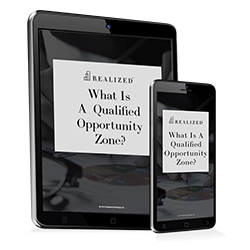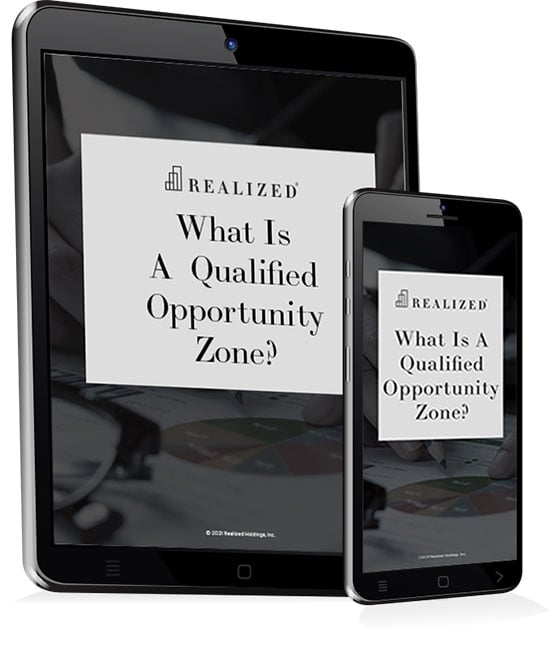
The 90% Test is a method to validate if a QOF (Qualified Opportunity Fund) qualifies for the benefits of a QOZ (Qualified Opportunity Zone). The QOF must hold 90% of its assets in a QOZP (Qualified Opportunity Zone Property). A QOZP can be any of the following property types:
- QOZ business property (QOZBP).
- QOZ stock.
- QOZ partnership interests.
A QOZBP allows the QOF to operate a business directly while the last two property types allow the QOF to operate a business indirectly.
With 90% of the fund’s assets invested into a QOZP, the fund demonstrates it has an interest in businesses within the QOZ. There are specific timeframes and calculations to figuring out the 90% Test, which will be covered in this article.
Updates included in the Proposed Regulations:
The following pertains to the second set (or tranche) of proposed regulations released in April 2019.
90% Test Timelines: When to purchase a QOZBP is critical to meeting the proposed regulations. QOZBPs must be purchased after December 31, 2017. QOZBPs must also be new properties. This restriction is known as original-use and means a QOF can’t buy an existing property in a QOZ and qualify as a QOF.
There is an exception to the original use rule that allows QOFs to buy an existing property and “substantially improve” it so any updates equal at least the original basis in the property. Property improvements must be completed within 30 months of acquiring the property. Land does not need to be substantially improved if the building on the property has been substantially improved.
Timelines also dictate qualification as a QOF. The 90% test must be met on two different dates depending on when the QOF begins qualification: The first 6-month period of the taxable year and also the last day of the fund’s taxable year. The fund can elect when to start the 6-month period, which also starts the clock for investing in a QOZ. Six months is the maximum a fund has to invest 90% of its assets into a QOZ.
To demonstrate how the above two dates are used, let’s say a fund starts in September 2019. Since the 6-month test rolls over into the next year, the fund will be tested on December 31, 2019. If the fund had started in May 2019, its first test date would be in November 2019 and the second on December 31, 2019.
These last two subsections pertain to the second set of proposed regulations.
Excluding Certain Contributions: Capital contributions within the first six months into a QOF that are held in any of the following can be excluded.
- Cash and cash equivalents
- Debt instruments with a term of 18 months or less
Valuation Methods: There are two methods for determining annual valuation for the 90% Test.
- Financial Statements Valuation: Tangible property value is based on book value (after depreciation and amortization) as reported on the fund’s financial statement.
- Alternative Valuation: Tangible property value is determined from the original cost basis of the property.
If you choose one method for one year, you can still switch to another next year. There is no restriction to stay with the same method each year.
What should investors look for?
For anyone who's been following the QOZ regulations since their release in 2017, you already know the regulations have been vague in some areas when it comes to QOZ qualifications. The second tranche of regulations discussed in this article has provided additional clarity to the first set. The IRS and the Department of the Treasury are not expected to release an additional third tranche of regulations. They may instead release sub-regulations that provide further clarification.
“I don’t know what would even be in a third reg,” Treasury Tax Legislative Counsel Krishna Vallabhaneni, told Bloomberg Tax.
Making sure your investment is eligible for QOZ benefits should the most important item on your QOZ qualification checklist. It is an essential component of QOF due diligence.
Conclusion
While the second set of proposed QOZ regulations have provided additional clarity, as an investor, you may still have questions about deferred capital gains. There are a number of tax advantages to QOZs. Specific to capital gains, if you move realized gains from an asset sale into a QOF within 180 days of the sale, payment of capital gains taxes can be deferred until December 31, 2026, or until the QOF is sold - whichever comes first. Instead of paying taxes on your gain, you can put that same capital back to work.
We believe the second set of regulations allow investors to make an educated QOZ investment.
Continuing to explore the available pool of QOZs with an eye toward planning opportunities for capital gains can be an overall beneficial strategy. To learn more about opportunity zones and these proposed regulations, please review our additional QOZ content and contact a tax professional.



